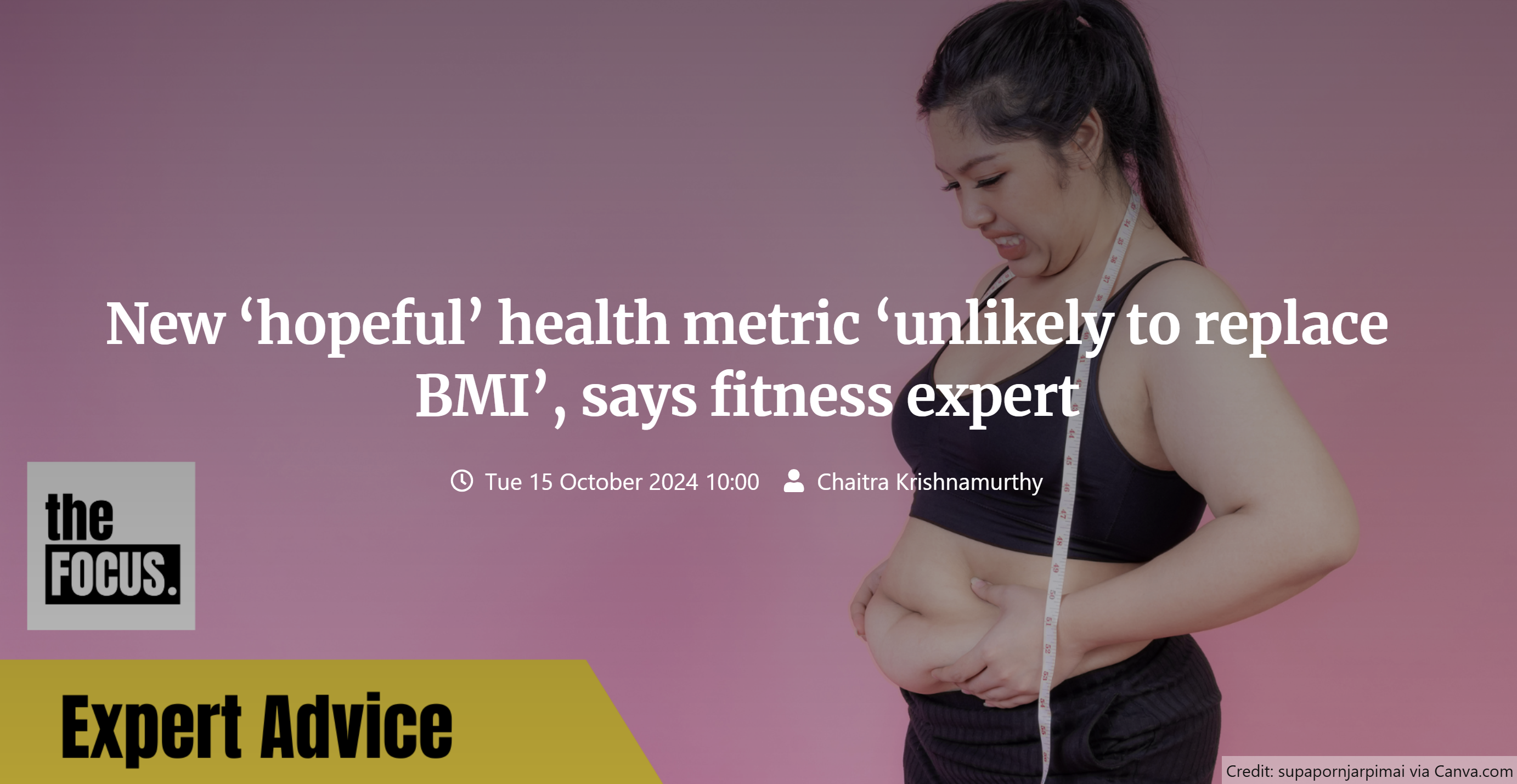 What is BRI and how accurate is it? The Focus reached out to Registered Dietitian and Fitness Expert Supatra Tovar to better understand BRI and learn more about its relevance when she said: “It’s unlikely that BRI will entirely replace BMI anytime soon.” BRI is a relatively new metric that takes into account the roundness of the body using weight and waist circumference. It closely looks at the body shape and fat distribution, especially around the abdomen, which studies suggest is a greater risk for cardiovascular diseases than general obesity. When asked if BRI is more accurate than BMI, Supatra told The Focus: “While there’s growing support for BRI, it’s still relatively new, and more research is needed before it can be fully endorsed as a standalone health metric. Early studies show that it provides a better understanding of fat distribution than BMI, but it hasn’t yet been validated on the same scale as BMI.” Although BRI looks at the fat distribution in the body, which is a greater indicator of health issues, BMI has been a “common standard for decades” and more research is needed before BRI can be “fully endorsed as a standalone health metric.”
What is BRI and how accurate is it? The Focus reached out to Registered Dietitian and Fitness Expert Supatra Tovar to better understand BRI and learn more about its relevance when she said: “It’s unlikely that BRI will entirely replace BMI anytime soon.” BRI is a relatively new metric that takes into account the roundness of the body using weight and waist circumference. It closely looks at the body shape and fat distribution, especially around the abdomen, which studies suggest is a greater risk for cardiovascular diseases than general obesity. When asked if BRI is more accurate than BMI, Supatra told The Focus: “While there’s growing support for BRI, it’s still relatively new, and more research is needed before it can be fully endorsed as a standalone health metric. Early studies show that it provides a better understanding of fat distribution than BMI, but it hasn’t yet been validated on the same scale as BMI.” Although BRI looks at the fat distribution in the body, which is a greater indicator of health issues, BMI has been a “common standard for decades” and more research is needed before BRI can be “fully endorsed as a standalone health metric.”
Should people look at their BRI over BMI?
The fitness expert doesn’t favor one metric over the other. In fact, she recommends using them both. “Rather than replacing BMI with BRI, I recommend using it in combination with other health metrics, such as waist-to-hip ratio, blood pressure, cholesterol levels, and lifestyle factors,” she said. “Health is multifaceted, and relying on any single number—whether BRI or BMI—can be misleading. A more holistic view that includes behavior, diet, and other physiological markers provides a clearer picture of someone’s overall well-being,” Supatra continued.
Meanwhile, BMI alone fails to distinguish between fat and muscles, a disadvantage for people who work out regularly as they have more muscle mass. But BRI isn’t free of limitations. The fitness expert says it has the “potential to stigmatize certain body shapes. In this regard, waist-to-hip ratio (WHR) might be a better alternative, as it directly measures abdominal fat relative to hip size and is closely linked to cardiovascular and metabolic health. ”Like BRI, BMI shouldn’t be the sole measure of health, says Supatra. “Particularly in individuals with high muscle mass (such as athletes) or those who may carry a healthy amount of body fat but still have a healthy metabolic profile. ”Supatra Tovar is a clinical psychologist, a registered dietician, and a fitness expert. She specializes in Nutritional Psychology and has founded the holistic health educational company ANEW (Advanced Nutrition and Emotional Wellness).

Recent Comments